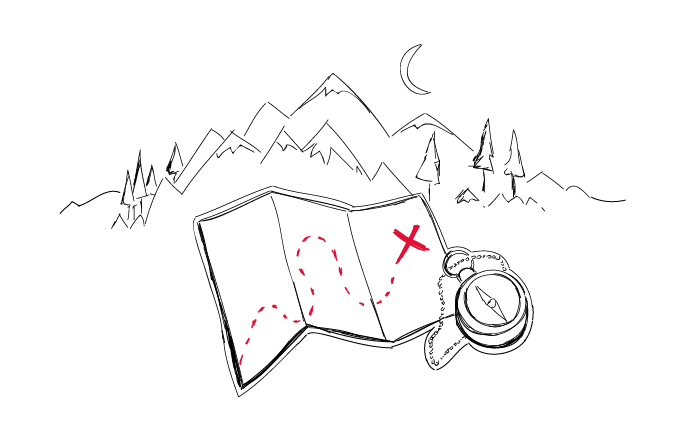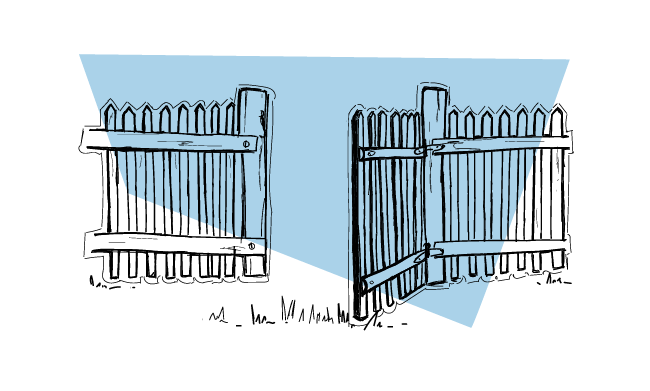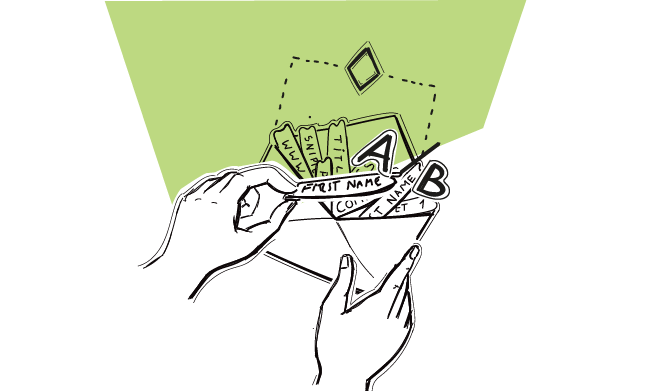Writing a cold email is easy. That’s what people think – I mean the people who never tried writing one. It’s not easy for many reasons, but especially because we have to remember about so many things at once while writing it. Actually, we have to remember about at least 10 things. I call them the Golden Rules of Cold Email.
Whether you’re sending cold email for some time now, or you’re just starting and have never sent your first cold email campaign yet, you should know them by heart. Here they are, in our blog post.
Rule #1: Keep it short
That’s almost boring, right? If you have ever read any post on how to write cold emails – it’s always there: keep it short. No more than 2-5 sentences. That’s all you need. Nonetheless, most people who tend to send me cold emails never heard of the #1 rule. Either that, or they simply decided to ignore it (which is a huge mistake).
Here’s how it works: People don’t like long emails. People usually don’t read long emails. People never read long emails from strangers. People cannot possibly reply with anything but “leave me alone” to an email they didn’t even read.
Rule #2: Keep it logical
From the very beginning, which is your From line, till the very end, which is your signature, our message has to be logical. It has to make sense. If our email is reasonable, it shows we are a reasonable person. Let’s always make sure our addressee knows why we reach out to them, what we are actually offering, and what the next step is.
Each part of our message has to logically match the other parts. If the addressee feels for a second that something’s not entirely right here, this may be a sufficient reason for them to delete our message.
Rule #3: Make it valuable
Whatever we write about in our email, it has to be valuable to our addressee – that is of course, if we want them to reply. Our introduction, as well as the very pitch, have to be relevant to the prospect. So if we offer them some kind of a solution, let’s make sure it’s solving a problem they may actually have.
Only if they feel like they can actually gain from starting a relation with us, they will consider hitting us back with a reply.
Rule #4: It’s never about you
Our prospects are not interested in the story of our life. They are interested in the story of their life. Everyone likes to read about themselves. Our cold email cannot be about us or our solution, because honestly – no one cares. They will only care if it’s about them and a solution to their own problems.
We should always keep the focus of our message on our recipient – never on ourselves. Even in the pitch, where we’re explaining what it is that we are actually offering. We can only write about ourselves in the context of our recipient. So if you’re still sending emails including a list of features – quit it right away.
Rule #5: Know your addressee
That’s the main difference between quality email outreach and spam. We need to know who we are sending the message to. I don’t mean know them personally – that’s why we call it cold email: because we haven’t contacted our addressee before. But we have to know who they are, how they work, how they speak, what they love, what they hate, what their problems are. Only this way, we can make our cold email valuable for them (see Rule #3).
Rule #6: Do not sell
The cold email is not supposed to sell. We don’t want to close a deal with a cold email. We want to start a relation with our prospect. So if our email in any of its parts sounds even a bit salesy, we should revise it.
Rule #7: Be human
We need to forget about trait formulae. Stop being a sales rep for once. Stop being a robot once and for all. Just be human and write like a human being.
We need to keep the tone light and remember that we’re addressing another person. If we know who they are, we also know how they speak, and we need to speak the same (see Rule #5).
Rule #8: Always follow-up
One message may not be enough (usually, it’s not enough). Some people will be too busy to reply to us, and they they will simply forget about the email we sent them. Some will actually not reply to our first email on purpose, just to check if we care enough to follow up with them. That’s why, follow-up is necessary.
Following up, we show our addressees that we are persistent and we really care about starting a relation with them.
If you’re not doing that, or still sending your follow-ups by hand, give Woodpecker a try>>
Rule #9: What works for others will not necessarily work for you
Before we copy and paste a ready-made template and hit send, we should stop and ask ourselves if it really fits our audience and the real purpose of our email. Each of us targets at a different group of prospects. Each of us wants to achieve a little bit different goal with our cold email. Each of us speaks the way that is characteristic to him/her.
So why would we ever copy and paste a ready-made template without asking questions? If we know our group of prospects (Rule #5) and if we want to speak like a human being, not like a machine (Rule #7), we should write our emails on our own.
Of course, we can see what worked best for others and check out the most effective templates. That always helps and brings some new ideas. We can even use a similar structure, tone, and psychological mechanisms to reach to our prospects. But the very message should be unique because it’s supposed to be tailored for our recipient.
Rule #10: Check if you would reply to it yourself
It’s crucial to put ourselves in our addressee’s shoes for a moment and check if we would be willing to reply to the email we wrote. That’s a very simple, yet a very effective test each of us should carry out before sending our messages. The easiest way is to read our email out loud to ourselves and see if it sounds human, if it doesn’t sound salesy, if it has the tone we meant it to have.
Final words
If you don’t abide by the rules, perhaps that’s why your cold email outreach is not as effective as it could be. Check your emails against those ten rules and try to figure out what still can be improved in your cold email campaigns.
P.S. If there are other important rules you think are crucial and I didn’t mention them here, feel free to share those in the comments below.
FAQ
Are cold emails illegal in Europe?
Cold emailing in Europe is legal but regulated under GDPR, which mandates clear opt-out options and transparent disclosure of contact details.
What are the restrictions on cold emails?
Restrictions on cold emails include mandatory unsubscribe links, accurate subject lines, and disclosure of the business address to prevent spam emails.
Is cold email allowed by GDPR?
Yes, GDPR allows cold emailing as long as it adheres to regulations regarding consent, data protection, and managing opt-out requests efficiently.
Is cold emailing illegal in Germany?
Cold emailing is not inherently illegal in Germany; however, it must comply with strict cold email laws about user consent and data privacy.
Are B2B cold emails legal?
B2B cold emails are legal, provided they include proper disclosures, an unsubscribe link, and avoid deceptive subject lines.
How many cold emails per day?
The number of cold emails per day isn’t capped by law but should be managed wisely to avoid spam classification by email service providers.
Is cold email ethical?
Cold email can be ethical if it provides value to the recipient, respects privacy with a clear opt-out mechanism, and avoids sending the same message indiscriminately.
Is cold calling illegal?
Cold calling is legal but regulated under various national laws like Canada’s Anti-Spam Legislation, which guards against unsolicited commercial messages.
Is cold emailing bad?
Cold emailing isn’t inherently bad; it can be an effective part of a cold email outreach campaign if done respectfully and in line with anti-spam laws like the CAN SPAM Act.
READ ALSO

Step-by-Step Practical Guide to a Cold Email Campaign That Gets Delivered
Sending an automated cold email campaign is just a start. In the end, you want your emails to actually get to your prospects' inboxes. And to make that happen, it's crucial that you properly plan and set up your cold email campaign in every detail. I wrote this post in cooperation with our Support team and our Head of Integration & Deliverability, because we observed that many of our users still need help when it comes to properly adjusting their cold email campaign settings.

Should I Give My Cold Email Addressee a Way to Opt Out?
Some would immediately say Yes! to putting an unsubscribe link. Some would say No… The answer to this is more complex than it may seem, so whatever your first answer was, you may want to check this article for a non-radical but rather a common-sense approach to an opt-out in cold email.

Lean Approach to Email Outreach, or How Big Should My Cold Email Campaign Be?
Our users sometimes report to us that they couldn't find enough time to run their outbound campaigns. Yes, a well-thought-out cold email campaign takes some time to get prepared. But what we often observe is that cold email senders want to go large from the very beginning: have a prospect base including thousands of addresses, an 8-touch email sequence with A/B testing, and so on. In this post, I'm going to show you why it's more beneficial to start small. Check out what we call the lean approach to cold email, and why it's worth testing.
